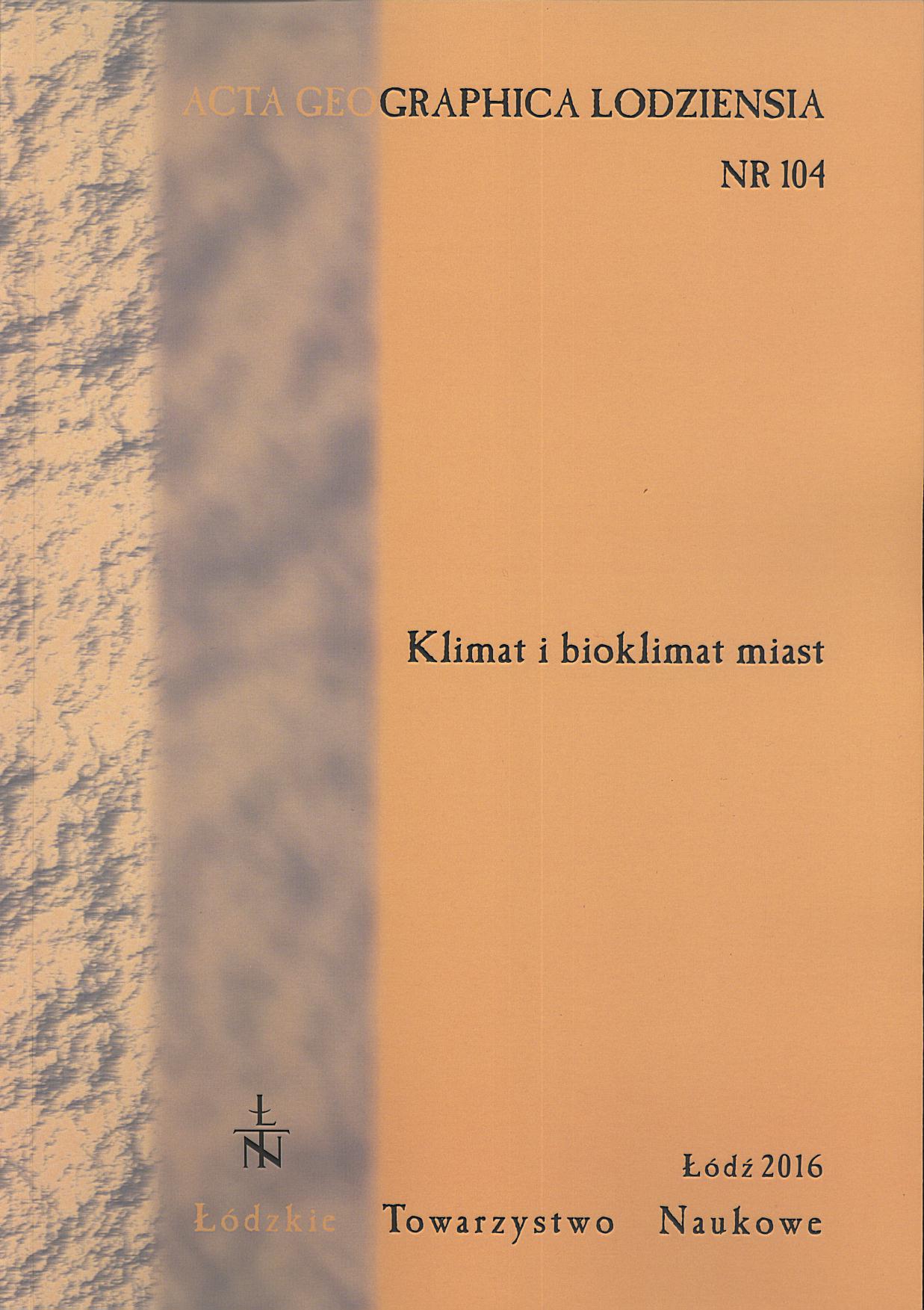Wybrane charakterystyki turbulencji na obszarach miejskich, rolniczych i naturalnych
Selected turbulence characteristics in urban, rural and natural areas
Author(s): Krzysztof Fortuniak, Mariusz Siedlecki, Włodzimierz PawlakSubject(s): Geography, Regional studies, Environmental Geography
Published by: Łódzkie Towarzystwo Naukowe
Keywords: turbulent kinetic energy; stability parameter; Obukhov length; friction velocity; eddy-covariance method
Summary/Abstract: Turbulent transport is one of the most important mechanisms of energy gaining and losing for theEarth’s atmosphere. In spite of the importance of these processes for the understanding of local andglobal climate, the information on the typical values of the parameters characterizing turbulent transportin the surface layer of the atmosphere is still limited. Particularly, in Polish literature there is a lack of publicationson annual and daily courses of parameters such as turbulent kinetic energy per unit mass(TKE/m), the stability parameter (ζ = z/L, where z – measurements height, L – Obukhov length) orbulk transfer coefficient (CD = ( )2, where – friction velocity, – mean wind speed).The main goal of the present work is to characterize these parameters for three types of surfaces:urban, agricultural and natural (Fig. 1). The analysis is performed on the basis of multi-annual eddycovariancemeasurements.The urban conditions are represented by a measurement station in the city of Łódź in Lipowa 81str. (51°45’45”N, 19°26’43”E). The site is located in a compact building development. The measurement height, 37 m, is more than twice the mean roof level which allows to assume that the measurementsare carried out in the inertial sub-layer (see Pawlak et al. 2011; Fortuniak et al. 2013; Fortuniak,Pawlak 2015 for more details). In the present study the data from the period July 2006 – September 2015 is analyzed. The agricultural station is located about 50 km east of Łódź (51°45’01”N,20°25’03”E) close to the Annosław village, in the typical Polish farmlands. The sensors are mountedat a tripod at the height of 3 m. The data covers the period from November 2011 to December 2015.The third station is located in the natural wetlands of the Biebrza National Park, close to the village ofKopytkowo (53°35’31”N, 22°53’32”E). The measurement system is mounted at a height of 3.7 m. Thesurrounding vegetation is dominated by the mixture of reeds, sedges and rushes typical for the Biebrzawetlands. The data used covers the period between June 2013 and December 2015. The wind velocity, temperature, and humidity were recorded at all stations using sonic anemometers (RMYoung 81000)and gas analyzers (Li7500) with 10 Hz frequency.The turbulent kinetic energy reaches the highest values in spring or in summer and the lowest inautumn (Fig. 2). The annual course is similar for Lipowa and Kopytkowo and differs from Annosławwhere agricultural activity modifies geometrical properties of the surface (mainly roughness). Thevalues of TKE/m are clearly higher at the urban station. Diurnal patterns of TKE/m are dominated bythe maximum in early afternoon (Fig. 3), which can be attributed to the development of convection,especially in summer. The ratio of turbulent kinetic energy to the kinetic energy of the mean wind ishigher for the urban site (Fig. 4) and depends significantly on the wind direction. The results forLipowa show the influence of a nearby church tower on the increase of TKE for wind directionsaround 248°. Similarly, the two regimes of this parameter for Kopytkowo are related to the asymmetryin the vegetation height in two sectors. The stability parameter ζ at all the stations is negative duringthe day (unstable conditions) and positive at night (stable conditions). However, for the urban site ittakes clearly lower values (Fig. 5). The absolute values of the Obukhov length are clearly higher at theurban station, which can be attributed to increased turbulent mixing (Fig. 6). The frequency of occurrenceof stability classes shows an increased number of unstable situations in urban areas (Fig. 7),which can be a consequence of the urban heat island. The bulk transfer coefficient is higher for urbanareas, which is a result of increased surface roughness (Fig. 8). The diurnal course of CD (Fig. 9)shows influence of stability on the momentum transfer. This influence also affects annual variabilityand results in slightly higher values of CD in summer at the Lipowa and Kopytkowo sites. The annualvariability of CD is marked more distinctly in Annosław, which is a result of changes in the surfacegeometry related to agricultural activity (growth and harvesting of plants). The friction velocity isclearly higher at the urban site. Its annual variability is weakly pronounced (Fig. 10) but in the summerit exhibits a clear diurnal variability (Fig. 11) with maximum at noon hours.
Journal: Acta Geographica Lodziensia
- Issue Year: 2016
- Issue No: 104
- Page Range: 101-112
- Page Count: 12
- Language: Polish

